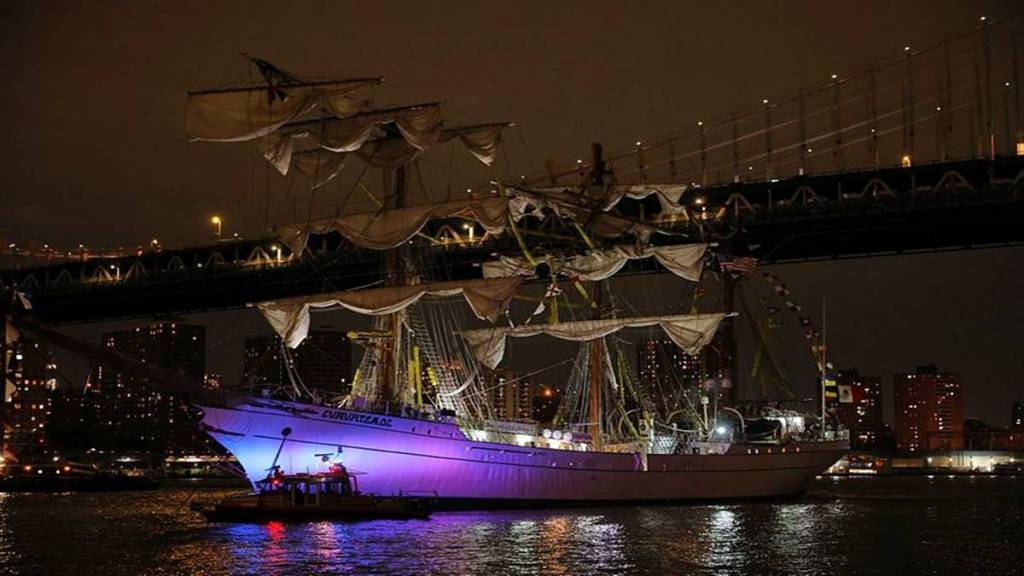The 300-ft long Mexican Navy ship that killed two crew members and 19 other people after its masts crashed into the Brooklyn Bridge is believed to have been going in reverse at a high speed on Saturday. On Monday, federal investigators revealed that the tall ship, called the Cuauhtemoc, was moving at a speed of about 2.3 knots after beginning its short journey from a Lower Manhattan pier.
Mexican Navy ship’s speed rose from 2.3 knots to 6 knots before the Brooklyn Bridge crash
While at a news conference, the National Transportation Safety Board’s (NTSB) Brian Young said the naval ship retained its original speed for “a bit of time” until it began accelerating. Less than five minutes after taking on its course, the Cuauhtemoc smashed into the bridge. The latest update from the fatal scene has revealed that at the time the distressing crash took place, the ship’s speed had escalated to six knots.
The officer leading the investigation admitted that the mystery surrounding the sudden acceleration had yet to reveal itself.
The Mexican ship departed from Acapulco on April 6. Its tour stops included New York, Scotland, Cuba, Spain, Jamaica, Barbados, and London. After stopping in Manhattan, the Cuauhtemoc was supposed to be in Reykjavík, Iceland. With 277 people on board, the Mexican tall ship had been docked in New York since May 13.
NEW: NTSB says the Mexican Navy ship that ran into the Brooklyn Bridge sped up right before the crash, say they are investigating why that took place.
— Collin Rugg (@CollinRugg) May 19, 2025
Investigator-in-charge Brian Young released new information on the tragedy.
Just moments before the ship ran into the bridge,… pic.twitter.com/d9fEqY6Up0
Brian Young dissected the timeline, disclosing that with the tugboat’s help, the Cuauhtemoc backed away from Pier 17. According to an initial weather report, dusk conditions, westerly winds of about 10 knots and a current of about 0.3 knots were expected.
‘Start of a long process’: Mexican Navy ship crash investigation
Instead of sailing south after departing from the pier, “the vessel’s astern motion and speed increased,” as it started moving in reverse toward the bridge. America’s NTSB has joined forces with their Mexica counterparts for an investigation that is still in its earliest stages. “This is a start of a long process,” NTSB board member Michael Graham said at the conference.
A preliminary report listing the latest findings in the case is expected to be issued within 30 days. “We will not be drawing any conclusions. We will not speculate.” Brian Young further highlighted that the investigation could take up to two years to complete.
The NTSB has yet to be granted permission to access the ship. Moreover, interviews of the captain or the tugboat and harbour pilots are pending. Officials also established that the Brooklyn Bridge had averted major damage.


